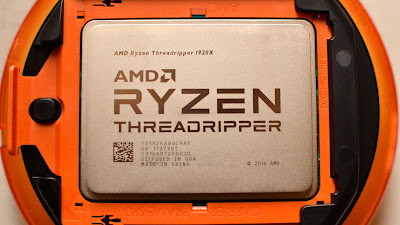>> BATTLE OF MICROPROCESSORS
Many people might spend their whole life using just two processors namely, Intel(for PC) and Snapdragon(for smart-phones) or unknowingly EXYNOS, for them there is no processors other than these exists in the market. There are some PC processors like AMD, VIA and some smartphone processors like MediaTek, Intel Atom which are still surviving in this competitive era.
So, lets talk about all them one by one:-:
So, lets talk about all them one by one:-:
I'm not gonna talk much about Intel's i-series or Snapdragon or Apple's A-series or Samsung's EXYNOS, as our topic is for what else is there other than these chipset rulers.
So starting the discussion with the AMD(Advance Micro Devices) processors which are famous for their better quality/price ratio. AMD’s CPUs, especially at the mid-range and lower-end of the spectrum, do tend to offer slightly better value than Intel's "i". Conversely, altough Intel chips have stronger single core and gaming performance than even AMD’s best Threadripper(known for multithreading) CPUs but in return, those who are looking to use applications with a heavier multi-threaded focus, should derive more benefit from a modern AMD CPU which is more unlocked and more under-the-hood options, and a much better platform for the same price as the Intel offering.
The unexpected AMD THREADRIPPER whose story starts back in 2014 when a small group of AMD employees who had a passion and vision of a processor that they’d really want to built in terms of a high-performance PC and processing beast, and 'eureka' they succeeded. THREADRIPPER paves the way for the RYZEN processors based on ZEN architecture and is even better than Intel's equivalent and highest performing desktop CPU - Core i9-7900X in terms of multi-threading and with the RYZEN in hand AMD has reportedly gained 10.4 percentage points of CPU market share in the second quarter of 2017 with the total 31% market share.
The unexpected AMD THREADRIPPER whose story starts back in 2014 when a small group of AMD employees who had a passion and vision of a processor that they’d really want to built in terms of a high-performance PC and processing beast, and 'eureka' they succeeded. THREADRIPPER paves the way for the RYZEN processors based on ZEN architecture and is even better than Intel's equivalent and highest performing desktop CPU - Core i9-7900X in terms of multi-threading and with the RYZEN in hand AMD has reportedly gained 10.4 percentage points of CPU market share in the second quarter of 2017 with the total 31% market share.
Coming to VIA processors which were once considered as a threat to the Intel and AMD processors in the early 2000s but gradually their market share dropped below 1%. Surprisingly they are still struggling to grab the market-share off the Intel and AMD. Despite being a company at the periphery of the x86 Industry, it manages to deliver a processor that aspires to be just as modern as any other AMD or Intel offering out there. Now after failing in PC market Via is now focusing on IoT market and hence released a new single-core x86 chip called Eden X1 for IoT devices and industrial automation.
Now talking about MediaTek which has made a name, providing chips for low-cost Android smartphones and tablets and also the second-ranked smartphone chip supplier after Qualcomm. The reason behind its low market share is that it has slowed the pace in product upgrades for its flagship Helio product line, offering nothing better than an LTE Cateogry 6 modem, while rival Qualcomm raised the bar with the world’s first 10nm processor, the 835 Snapdragon, including a Category 16 modem. But it looks Mediatek has good plan for coming year with its Cat 10 or Cat 12 products.
Now talking about MediaTek which has made a name, providing chips for low-cost Android smartphones and tablets and also the second-ranked smartphone chip supplier after Qualcomm. The reason behind its low market share is that it has slowed the pace in product upgrades for its flagship Helio product line, offering nothing better than an LTE Cateogry 6 modem, while rival Qualcomm raised the bar with the world’s first 10nm processor, the 835 Snapdragon, including a Category 16 modem. But it looks Mediatek has good plan for coming year with its Cat 10 or Cat 12 products.
Alongside Qualcomm and Apple's A-series processors the tech giant Intel is trying to pave the way for their Intel Atom processors but are not so much successful in doing so. The key difference between Snapdragon and Atom (Intel's only well-documented processor for ultrasmall devices) is power and integration. Qualcomm--because of its background in the cell phone market where integration and low-power are the name of the game--has packed a lot of features onto one piece of silicon that is short on power consumption and long on battery life. By comparison, delivering integration and long battery life in a tiny device are not things Intel has focused on in the past.
So, friends this is all I want to convey about "Micro-Processors" but this is not the end of this Processor's world, there is much more beyond this.....






Comments
Post a Comment